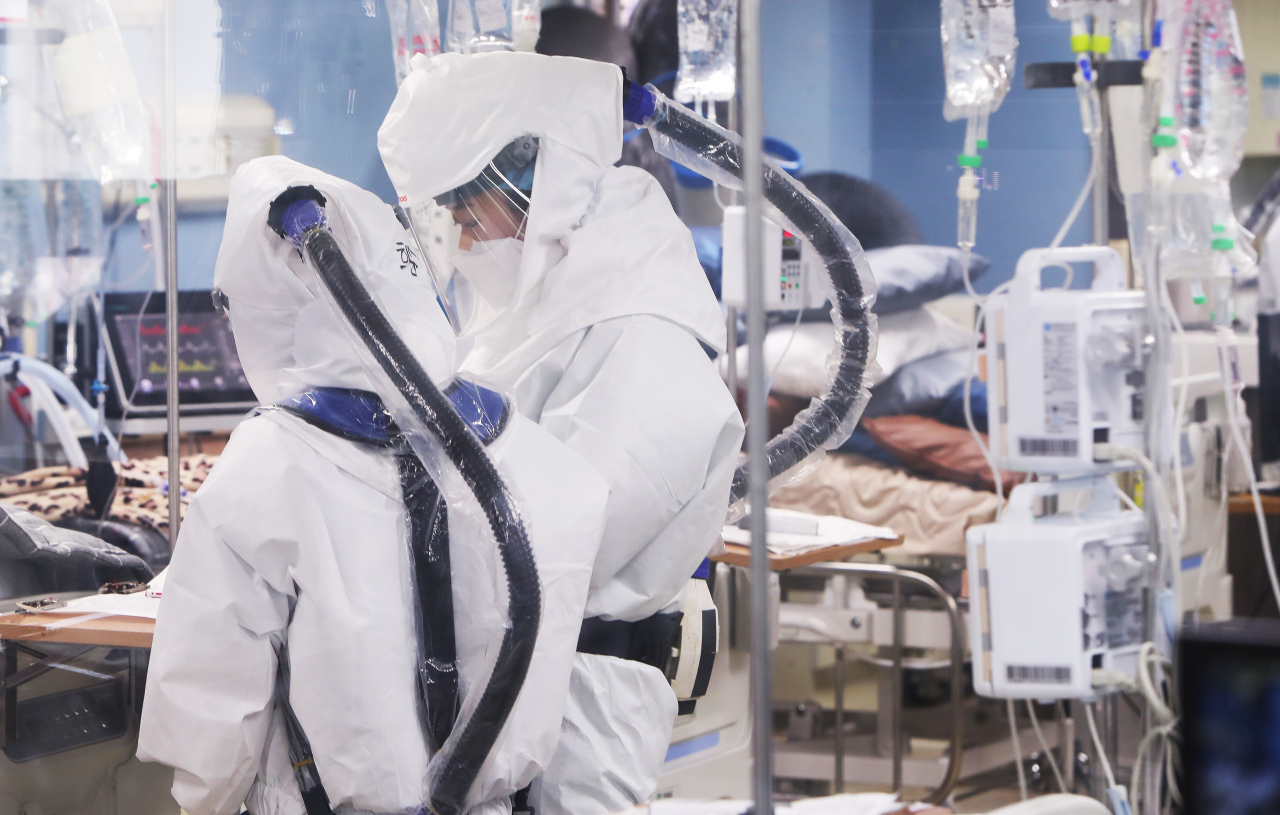As South Korea readies for “a phased return to normal” later in the fall as more of its population is vaccinated, front-line doctors say there is an elephant in the room that is going unaddressed -- the question of who will have access to health care and who won’t in a surge crisis.
“Before moving on to a less restrictive pandemic response, I think we need to have a discussion on how finite health care resources may be rationed in the event of a surge,” said Dr. Hong Sung-jin, an anesthesiology and critical care medicine specialist at Catholic University of Korea St. Mary’s Hospital in Seoul.
“More freedoms and less restrictions mean more patients. This may well be a reality that Korea could be facing as we navigate a new phase.”
Home care is the solution being floated to relieve burden on hospitals, according to the Ministry of Health and Welfare.
Lee Ki-il, a senior ministry official, said in a news briefing last week that “instituting at-home COVID-19 care is an indispensable step in bringing back more normalcy.”
“As Korea returns to normal, a rise in patients is something that is anticipated,” he said in a phone call with The Korea Herald, explaining that at some point, isolating and treating all those that become infected in a clinical setting “may no longer be viable.”
“Patients who experience only mild or no symptoms will have to stay home instead.”
What is still missing in Korea’s preparations for future waves of the pandemic, said Dr. Park Sung-hoon, a pulmonary and critical care medicine specialist at Hallym University Sacred Heart Hospital, is a triage system for sicker patients.
“When hospitals are full, we could be forced to choose which severely or critically sick COVID-19 patients will receive potentially life-saving care,” he said.
“It is an extreme scenario,” he said, but contingency planning “must include all points of crisis.” “We need to think these situations through in advance so that when things go wrong, we know what to do and respond expeditiously.”
Park said rationing critical care was “almost like determining who lives and who dies.” “There should be an open, public discussion on how our limited resources should be distributed across systems equitably, and ethically.”
For instance, if the goal is to save as many people as possible, it would make sense to prioritize patients who are more likely to survive over patients with an unpromising prognosis, he said. But that was not the decision that a doctor alone can make.
“Some of the things to consider are the likelihood of a successful response to aggressive interventions like mechanical ventilation,” he said, calling for “concrete advice for basing such life-and-death decisions.”
“When an extremely elderly patient, already debilitated by underlying conditions, comes down with COVID-19, do we admit him to a crowded ICU?”
Park says this is the kind of debate that never took place in Korea through each wave of the pandemic left hospitals overwhelmed and scrambling to cope with patients pouring in.
The Korean Society of Critical Care Medicine, together with ethics experts, had proposed to public health officials emergency operations guidelines on how to allocate health care resources. But nothing ever m
In early December last year, as the winter wave of the pandemic was beginning to take hold, the ministry said there was “no priority protocol” for allocating critical care beds in response to a press inquiry. At the time less than 50 critical care beds capable of serving COVID-19 patients were left in the country.
Not much has changed since. Asked in which order of priority a patient may have access to care, one deputy minister holding multiple positions within the government headquarters for COVID-19 response, said, “The sickest patients come first.” “In a health emergency it’s always the patients with most urgent needs that we save first.”
“It’s up to the doctors,” said a Ministry of Health and Welfare official overseeing patient flow and bed capacity management. “The government has no role in a medical emergency decision,” she said, adding, “That is not the kind of situation that Korea is facing.”
But deciding who needs care most is not that easy, said infectious disease specialist Dr. Eom Joong-sik of Gachon University Gil Medical Center in Incheon, neighboring Seoul.
“Saving the most lives could mean having to remove supportive care from one patient to place it on another, for example,” he said.
“Suppose a dying patient in his 80s is placed on a ventilator, and there is no other ventilator available. Could we remove his ventilator and put it on a younger patient in his 30s or 40s who has a much better chance of surviving, but whose life would be in danger without the help of the machine?” he said. Currently, at Korean hospitals, it was on a first-come, first-serve basis.
“It’s a difficult topic to bring up, but somebody has to initiate the talk,” he said.
By Kim Arin (
arin@heraldcorp.com)








